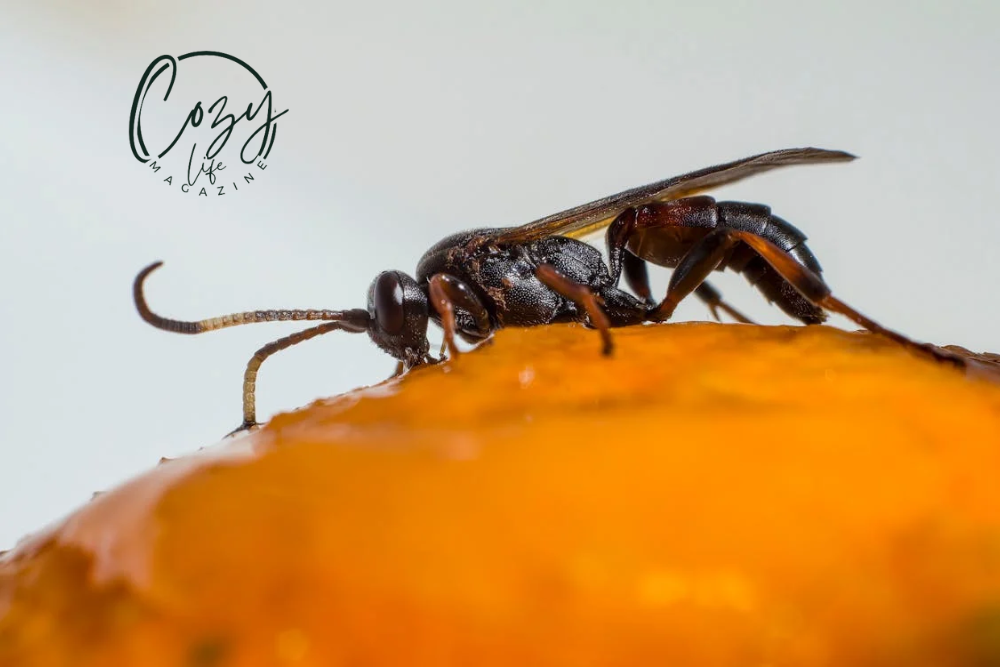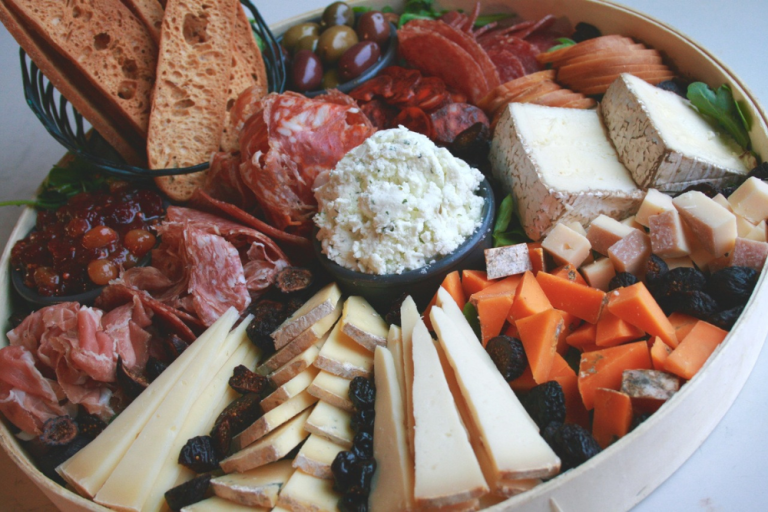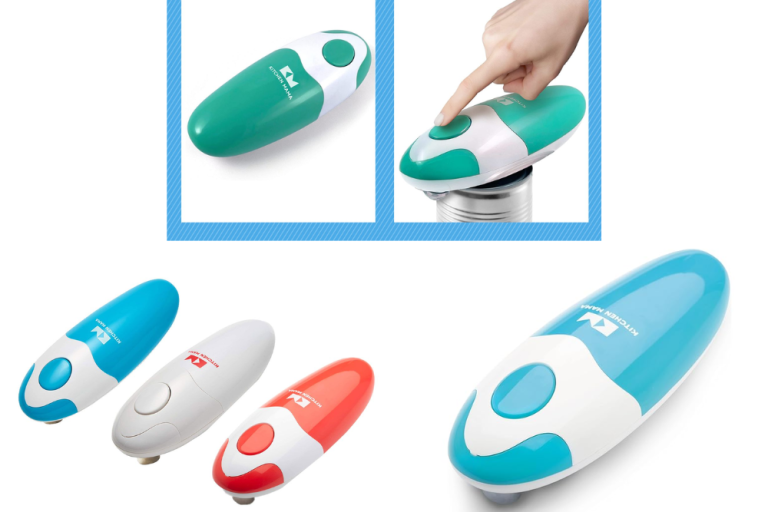How to Get Rid of Fruit Flies in Your Kitchen
Fruit flies can be a frustrating and persistent problem in many households, especially when they start appearing around fresh produce and kitchen waste. These tiny pests seem to come from nowhere, invading our kitchens and multiplying quickly. Fruit flies aren’t just annoying—they can also spread germs and spoil fresh fruits and vegetables, turning a healthy kitchen into a source of irritation.
Luckily, there are simple solutions that you can implement right at home. From DIY traps to understanding their breeding habits, you can effectively rid your kitchen of fruit flies with some key strategies. This article will guide you step-by-step on how to eliminate fruit flies, prevent future infestations, and keep your kitchen clean and healthy.
In this article, we’ll explore the life cycle of fruit flies, DIY and commercial traps, preventative measures, and the best ways about How to Get Rid of Fruit Flies. Let’s dive into understanding the root of the problem and take the first steps toward a pest-free kitchen.
Introduction to Fruit Flies
Overview of the Fruit Fly Problem
Fruit flies are small, winged insects that are attracted to ripening or fermenting foods, particularly fruits and vegetables. They lay eggs on moist surfaces, which hatch into larvae that feed on these food sources. With a quick reproduction cycle, fruit flies can quickly multiply, making it essential to address infestations at the first sign.
Understanding Fruit Fly Season
Fruit flies thrive in warmer months, often appearing in late summer and early fall when fresh produce is abundant. However, they can infest kitchens year-round, especially if proper food storage and cleanliness aren’t maintained.
Why Fruit Flies Are a Common Household Issue
Fruit flies are attracted to any organic matter, especially sugary and fermenting items. This makes them common in households where fruits, vegetables, or organic waste are stored in the kitchen.
Understanding Fruit Flies
What Are Fruit Flies?
Fruit flies, scientifically known as Drosophila melanogaster, are small, flying insects typically measuring around 1/8 inch (3 mm) in length. They have a distinctive tan or brown body and red eyes, which are their most noticeable features. Fruit flies are known for their strong attraction to the scent of ripening fruits, fermenting food, and sugary substances. These insects often swarm around food sources in kitchens and areas where organic waste accumulates, making them common household pests, especially during the warmer months.
Fruit flies are not just attracted to fresh fruit but also to any decomposing organic matter, including vegetable scraps, spilled sugary drinks, and even trash. Due to their small size and high reproductive rate, they can quickly become a significant problem if left unchecked.
Also have a look at our blog about, 30 Oak kitchen cabinets.
Average Cost of Small Kitchen Remodel
Life Cycle and Reproduction
The life cycle of a fruit fly is fast, making them an efficient breeder. A female fruit fly can lay up to 500 eggs at once, typically in moist, decaying organic material, such as overripe fruits or kitchen waste. Within 24 hours, the eggs hatch into larvae. These larvae feed on the organic matter around them, growing rapidly. Within about a week, the larvae transform into adult fruit flies, completing their cycle. Once they reach maturity, they are ready to mate, and the process begins again.
Because of this rapid cycle, fruit flies can go from eggs to adults in as little as 8 to 10 days, leading to a significant increase in population in a short amount of time. This makes quick intervention essential if you want to prevent an infestation from spreading.
How They Enter Homes
Fruit flies can easily find their way into homes through various entry points. Common methods of entry include:
- Open doors and windows: Fruit flies are small and can easily fly through open entrances, especially during warm weather.
- Infested produce: Fruit flies often hitch a ride on fruits and vegetables brought from grocery stores, farmers’ markets, or even your garden. If the produce is already infested, you might unknowingly introduce fruit flies into your home.
- Drains and garbage: Fruit flies are drawn to moist, organic areas such as sinks, drains, and garbage bins, where they find ideal conditions to breed.
Once inside, they typically seek out moist, organic material to lay their eggs, such as overripe fruit, food scraps, or even areas like drains where food residue accumulates.
Identifying Different Types of Small Pests
While fruit flies are among the most common pests in kitchens, they are often mistaken for other small flying insects, such as fungus gnats or drain flies. Here’s a quick guide to help you differentiate between them:
Fruit Flies
- Appearance: Small, tan or brown body with red eyes.
- Habitat: Found near ripening fruits, fermented food, and kitchen waste.
- Behavior: Attracted to sugary substances, rotting fruit, and organic matter in kitchens and garbage areas.
Fungus Gnats
- Appearance: Darker color, longer legs, and a smaller body.
- Habitat: Typically found around houseplants and moist soil.
- Behavior: Prefer moist environments where plants are watered, especially in the soil of potted plants.
Drain Flies
- Appearance: Moth-like with fuzzy wings, darker in color.
- Habitat: Commonly found near sinks, drains, and compost areas.
- Behavior: Often seen near areas with stagnant water or decaying organic material, such as food residue in drains.
By observing the size, appearance, and habitat of the pest, you can determine whether you are dealing with fruit flies, fungus gnats, or drain flies, and act accordingly to eliminate the infestation.
| Pest Type | Appearance | Habitat |
| Fruit Flies | Small, tan, red eyes | Near fruits, kitchen waste |
| Fungus Gnats | Darker, longer legs | Near houseplants, soil |
| Drain Flies | Moth-like, fuzzy wings | Sinks, drains |
Checking for Signs of Infestation
When checking for signs of a fruit fly infestation, the first thing to look for is the presence of small, flying insects around your produce, garbage, or sink areas. These pests are particularly active in warm, moist environments where food residue is abundant. You might also notice them around compost bins or near damp areas where food particles accumulate.
Adult fruit flies are easy to spot as they are small and typically hover near food sources. However, you should also be on the lookout for larvae, which are tiny, worm-like creatures that can often be found in rotting fruit, around drain areas, or on wet surfaces where they feed. These larvae can be a clear indicator of an ongoing infestation, as they hatch from eggs laid by adult flies.
The common breeding grounds for fruit flies in the kitchen include areas where organic material collects, such as countertops, garbage bins, recycling bins, and even drains. Fruit flies lay their eggs in these moist, food-laden environments, where their larvae can easily hatch and thrive. To control the infestation, it’s essential to target these breeding spots to eliminate the source.
The first step in controlling fruit flies is to identify and eliminate the source of the infestation. Begin by inspecting rotting produce, food scraps in garbage bins, and other moist areas around the kitchen. Overripe fruits and vegetables should be discarded immediately, as they are prime breeding sites for fruit flies. Additionally, make sure to clean out compost bins and regularly empty garbage bins, as they are also common breeding grounds.
For a more thorough approach, check hidden or lesser-used areas such as recycling bins, sink drains, and cracks in the kitchen where food residue may be hiding. Regular cleaning of these spaces is crucial to preventing a reinfestation. Clean all surfaces thoroughly, especially countertops, and wash your garbage bins with disinfectant to remove any eggs or larvae that may be present. This will help break the fruit fly life cycle and keep your kitchen fruit-fly-free.
DIY Fruit Fly Traps
Fruit flies are naturally drawn to the scent of fermented or sweet foods, which makes DIY traps a perfect solution. With just a few household items, you can quickly create effective traps to lure and capture these pesky invaders. Here’s a closer look at some of the best DIY trap methods, complete with instructions for each.
1. Bowl Trap with Apple Cider Vinegar
This classic trap is simple, effective, and affordable.
- What You Need: Apple cider vinegar, plastic wrap, a bowl, and a toothpick or fork.
- Instructions: Pour apple cider vinegar into a bowl, filling it about halfway. Cover the bowl tightly with plastic wrap, then use a toothpick or fork to poke several small holes in the plastic. The scent of vinegar attracts fruit flies, and the small holes prevent them from escaping.
- How It Works: The vinegar’s smell lures the flies, and they become trapped under the plastic wrap as they enter through the holes.
2. Red Wine Trap
Like apple cider vinegar, red wine has a sweet, fermented scent that fruit flies can’t resist.
- What You Need: Red wine, plastic wrap, a bowl or glass, and a toothpick or fork.
- Instructions: Pour a small amount of red wine into a bowl or glass. Cover the opening with plastic wrap, then poke small holes in the plastic. You can also add a few drops of dish soap to increase effectiveness.
- How It Works: The flies are attracted to the scent of red wine, which they can’t resist. Once inside, they become trapped and unable to exit.
3. Sticky Trap Options
Sticky traps, like fly paper, can catch fruit flies directly on contact and work well as a supplement to other traps.
- What You Need: Sticky tape, fly paper, or commercially available sticky traps.
- Instructions: Hang sticky paper or place sticky tape near high-activity areas, such as next to the fruit bowl, trash cans, or sink. You can also use sticky traps on windows where flies may congregate.
- How It Works: The sticky surface captures fruit flies as they land, making it an easy and mess-free way to control flies in areas where they’re most active.
Detailed Instructions for Each DIY Trap
1. Funnel Trap Method
The funnel trap method guides flies into a container from which they can’t escape.
- What You Need: Apple cider vinegar, a jar or bottle, a piece of paper, and tape.
- Instructions: Pour apple cider vinegar into the jar, filling it about 1–2 inches. Roll a piece of paper into a funnel shape with a small opening at the bottom, then secure it with tape. Place the funnel in the mouth of the jar, ensuring the narrow end is directed toward the vinegar.
- How It Works: Fruit flies enter through the funnel but struggle to find their way back out, effectively trapping them inside.
2. Plastic Wrap Trap Method
This method is similar to the bowl trap but uses a cup for a more compact trap.
- What You Need: Apple cider vinegar, a cup or small glass, plastic wrap, and a toothpick.
- Instructions: Pour vinegar into the cup until it’s about half full. Cover the top tightly with plastic wrap and poke a few small holes with a toothpick.
- How It Works: The flies enter through the holes drawn by the vinegar’s scent but find it difficult to exit, becoming trapped.
3. Dish Soap Trap Method
Adding dish soap to vinegar can make the liquid even more deadly to fruit flies.
- What You Need: Apple cider vinegar, a few drops of dish soap, and a bowl.
- Instructions: Pour apple cider vinegar into a bowl and add a few drops of dish soap, mixing gently. Leave the bowl uncovered.
- How It Works: The dish soap reduces the surface tension of the vinegar, causing fruit flies to sink and drown when they land on the liquid.
4. Rotting Fruit Trap Method
This trap is perfect if you have some overly ripe fruit-attracting flies.
- What You Need: Overripe fruit, a container, plastic wrap, and a toothpick.
- Instructions: Place a piece of overripe fruit in a container, then cover it with plastic wrap. Poke a few small holes in the plastic wrap with a toothpick.
- How It Works: The fruit’s strong scent lures fruit flies into the container, where they become trapped by the plastic wrap and can’t find their way back out.
Using these DIY fruit fly traps will help you control and reduce infestations in your kitchen. You can test a few different traps to see which works best for your home, especially if you’re dealing with a larger fruit fly population. Each trap can be made easily with materials found around the house, making them a practical solution to a common kitchen problem.
Store-Bought Fruit Fly Traps
Premade traps are a convenient and effective option when you need to address a fruit fly infestation quickly. These traps are designed for ease of use and typically come with non-toxic baits that attract and capture fruit flies. Premade traps are available at most garden centers, home improvement stores, and online retailers.
Recommended Brands and Products
Several brands offer high-quality, easy-to-use fruit fly traps that have garnered positive reviews for their performance.
- Terro: Known for its liquid fruit fly trap, Terro uses a non-toxic, attractant bait that lures and captures flies effectively. These traps are easy to use, and you can place them anywhere in your kitchen to tackle an infestation.
- RESCUE!: This brand offers a range of insect traps, including those specifically designed for fruit flies. Their traps use a bait that mimics the scent of rotting fruit, effectively drawing in and trapping flies. The RESCUE! traps are ideal for both short-term and long-term control of fruit fly problems.
Comparing Store-Bought Traps to DIY Traps
While store-bought traps are a great option for a quick fix, DIY traps are often just as effective and much more cost-efficient. Premade traps require a bit of investment, whereas DIY traps can be made using common household items at a fraction of the price. Both types of traps are effective when used correctly, and your choice may depend on your preference for convenience versus cost.
Testing and Results of DIY Traps
When testing the effectiveness of DIY traps, it’s important to assess them based on factors like ease of use, cost, and overall performance in capturing fruit flies.
Testing Criteria for Trap Effectiveness
To determine how well a DIY trap works, consider the following factors:
- Ease of Use: Does the trap require minimal setup and maintenance?
- Cost: Are the materials easy to access and inexpensive?
- Effectiveness: How many fruit flies does the trap catch over a period of time?
You may need to test different traps to see which one works best for your kitchen. For example, apple cider vinegar and dish soap traps are often among the most effective, but other methods, such as funnel traps or sticky tape, may work better depending on your environment.
Results and Effectiveness Comparison
Based on user feedback, vinegar and dish soap traps are highly effective at attracting and capturing fruit flies. The vinegar’s scent draws the flies, while the dish soap breaks the surface tension, causing them to drown. The funnel trap method is another effective option, with many users reporting good results. Though store-bought traps can be convenient, DIY traps are a highly cost-effective and efficient solution for most households.
In conclusion, effectively managing and preventing fruit fly infestations involves a combination of practical strategies such as using DIY traps, maintaining a clean kitchen, and proper food storage. By regularly cleaning countertops, floors, and drains, and ensuring that food is stored securely, you can significantly reduce the likelihood of attracting fruit flies. Additionally, DIY traps, like apple cider vinegar and dish soap solutions, offer an affordable and efficient way to catch and eliminate these pests. If the infestation persists, don’t hesitate to reach out to professionals for a more comprehensive solution. By following these steps, you’ll be able to maintain a fruit fly-free home, ensuring a cleaner and more enjoyable kitchen environment year-round.







